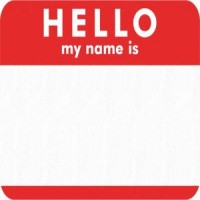The Language of Gender Variance (2014)

©2014 by Dallas Denny, Jamison Green, and Jason Cromwell
This paper is under review for publication in International Journal of Transgenderism.
Sources
Green, J., Denny, D., & Cromwell, J. (2011, 26 September). Evolution in the language of gender variance: 2001-2011. Paper at Transgender Beyond Disorder: Identity, Community, and Health; the bi-annual symposium of the World Professional Association for Transgender Health, Atlanta, GA.
Cromwell, J., Green, J., & Denny, D. (2001). The language of gender variance. Paper presented at the XXIV Harry Benjamin International Symposium on Gender Gender Dysphoria, Galveston, TX, 31 October–3 November, 2001.
Denny, D., & Green, J. (2002, 20 September). Respectful language. Presented at Southern Comfort 2002, Atlanta, GA.
Denny, D., & Green, J. (2002). Respectful language. Presented at Fantasia Fair 2002, Provincetown, MA, 20-27 October, 2003.
Denny, D., & Green, J. (2001). Respectful language. Focus group at Southern Comfort Conference, Atlanta, GA, 18-23 September, 2001.
Denny, D., & Green, J. (2001). Respectful language. Focus group at Fantasia Fair 2001, Provincetown, MA, 14-21 October, 2001.
At the 1997 HBIGDA Symposium in Vancouver, B.C., Jamison Green and I co-presented a paper entitled The Language of Gender Variance. As part of the presentation, Jamison mentioned some terms commonly used by the medical and psychological community to refer to transgendered and transsexual people and pointed out that many in the transgender community find those terms pejorative, dehumanizing, and objectifying. After the talk, Dr. Ira Pauly, a noted psychiatrist who had contributed a great many articles to the professional literature, asked us, “What DO you want us to call you?” We were at a loss for an answer, for we were not inclined to speak for the entire community out of our personal conjecturing, but we saw this as an opportunity for a considered response.
And so, our first paper on this topic was born. After we returned to our respective homes, we and anthropologist Jason Cromwell devised a questionnaire to ask transgendered and transsexual people their reactions to various and assorted terminology and usage, seeking information about what they did and did not wish to be called.
In early 1998 we distributed the original questionnaire via the internet and through mailings of the nonprofit organizations FTM International and the American Educational Gender Information Service. One hundred thirty-seven questionnaires were returned, of which 2 were incomplete and 1 was a duplicate, leaving 134 usable responses. In the late 1990s, and even the early 2000s, an n of 134 was quite respectable since transgender community had not yet coalesced and the World Wide Web was not yet well established as an avenue of access to specific segments of this community. In the late ‘90s and early ‘00s, needs assessment studies were being conducted in major metropolitan areas with even smaller numbers of subjects (see IJT, vol. 8, nos. 2/3, 2005).
We also conducted focus groups in September and October 2001 at the Southern Comfort and Fantasia Fair conferences to discuss our project and ask what message(s) about language usage participants would like professionals to hear. Roughly 25 people participated at each meeting; the messages we gleaned from these encounters are reported at the end of our paper.
We presented the results of our original survey at the 2001 HBIGDA Symposium in Galveston, TX, and received an enthusiastic response. In fact, our presentation had a transformative effect on the assembled professionals. Many subsequent presenters edited their projection transparencies to remove terms we had flagged as offensive and insert terms we reported as preferred. Some presenters even stopped themselves mid-stream and asked their audiences whether certain terms or usage were acceptable. This demonstration of collective intention to “get it right” was literally unprecedented, and was welcomed by trans people, allies, and professional colleagues alike. We did not attempt to publish the earlier paper, but hoped to gather more data and refine our ideas.
After a decade had elapsed we thought it a good time to revisit the survey to see how the language of gender variance had evolved. We launched essentially the same survey on the Web (one question was significantly expanded, as explained in our paper), this time using SurveyMonkey, and solicited responses by announcing the survey in an email directed toward well-connected and diverse community members known to us, encouraging them to spread the word inviting participants throughout trans communities. The survey was “live” from April 26, 2011 through June 30, 2011. This time we received 2651 responses.
Our paper is now under review for publication by The International Journal of Transgenderism. For this reason I’ve not reproduced it here. Our earlier paper is, however, available. Just click the button below and it will open in a separate tab.
